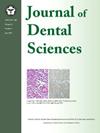Ex-vivo investigation of human salivary microbial growth with lysogeny broth for translational research–A pilot study
IF 3.4
3区 医学
Q1 DENTISTRY, ORAL SURGERY & MEDICINE
引用次数: 0
Abstract
Background/purpose
Salivary microbiome has become a surrogate indicator of oral disease due to its collective reservoirs and convenience in sampling. However, failed clinical trials often lead to wastes of resources, indicating a need for preclinical models. In this pilot study, we aimed to compare the salivary microbiome by metagenomics analysis before and after lysogeny broth culture for prospective translational studies.
Materials and methods
The study cohort included seven patients with severe periodontitis (Stage III/IV, Grade C), from whom unstimulated saliva was collected. The salivary microbiome was sequenced over the 16S rRNA gene V3–V4 hypervariable regions at baseline and after 6 hours of lysogeny broth culture.
Results
The results revealed changes in salivary microbiome and reduced bacterial diversity after culture, mainly due to the expansion of genera Neisseria (Median (Mdn) 15.95% to 37.52%, P < 0.05), Rothia (Mdn 10.21% to 16.32%, P < 0.05), and Haemophilus (Mdn 5.88% to 13.25%, P < 0.05). Periodontitis-related pathogens such as phyla Bacteroidetes, Fusobacteria and Spirochaetes were identified, while genera Porphyromonas, Parvimonas, Peptostreptococcus, and Campylobacter showed a decrease after lysogeny broth culture. Caries-related pathogens, including genera Veillonella, Leptotrichia, and species Haemophilus parainfluenzae and Streptococcus salivarius, were also detected.
Conclusion
This pilot study revealed that periodontitis- and caries-related bacteria could be identified in the saliva at baseline and after 6 hours ex-vivo culture with lysogeny broth. Our findings also suggested that lysogeny broth favored the growth of specific genera and may serve as a reference to monitor short-term modulation of these bacteria in salivary microbiome.
利用溶菌酶肉汤对人体唾液微生物生长进行体内外调查,以促进转化研究--一项试点研究
本文章由计算机程序翻译,如有差异,请以英文原文为准。
求助全文
约1分钟内获得全文
求助全文
来源期刊

Journal of Dental Sciences
医学-牙科与口腔外科
CiteScore
5.10
自引率
14.30%
发文量
348
审稿时长
6 days
期刊介绍:
he Journal of Dental Sciences (JDS), published quarterly, is the official and open access publication of the Association for Dental Sciences of the Republic of China (ADS-ROC). The precedent journal of the JDS is the Chinese Dental Journal (CDJ) which had already been covered by MEDLINE in 1988. As the CDJ continued to prove its importance in the region, the ADS-ROC decided to move to the international community by publishing an English journal. Hence, the birth of the JDS in 2006. The JDS is indexed in the SCI Expanded since 2008. It is also indexed in Scopus, and EMCare, ScienceDirect, SIIC Data Bases.
The topics covered by the JDS include all fields of basic and clinical dentistry. Some manuscripts focusing on the study of certain endemic diseases such as dental caries and periodontal diseases in particular regions of any country as well as oral pre-cancers, oral cancers, and oral submucous fibrosis related to betel nut chewing habit are also considered for publication. Besides, the JDS also publishes articles about the efficacy of a new treatment modality on oral verrucous hyperplasia or early oral squamous cell carcinoma.
 求助内容:
求助内容: 应助结果提醒方式:
应助结果提醒方式:


